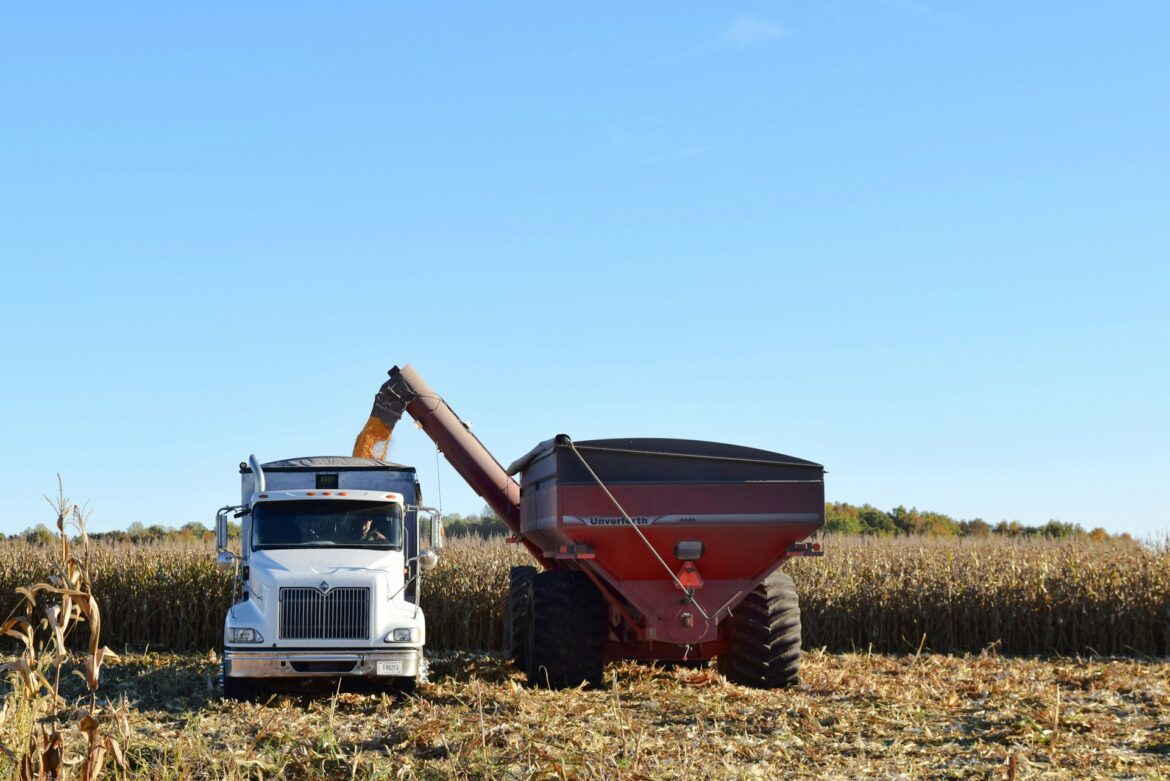Robotics Redefines Harvesting in U.S. Farms
In November 2024, the landscape of agriculture in the United States is undergoing a significant transformation as farmers increasingly adopt robotic technologies to automate labor-intensive harvesting processes. The use of advanced machinery is becoming a pivotal strategy for addressing labor shortages that have plagued the agricultural sector. With an increasing demand for food production, these innovations are not only aimed at boosting efficiency but also at ensuring the sustainability of farming practices in the face of growing challenges.
How Robotics Supports Harvesting
At the heart of this agricultural revolution are autonomous machines that leverage artificial intelligence (AI) and computer vision technologies. These sophisticated systems can efficiently identify, pick, and sort crops with unparalleled precision. Unlike traditional methods that often rely on human labor, these robots can operate continuously, day and night. This capability significantly reduces the reliance on seasonal labor, which has become increasingly difficult to secure due to workforce shortages and fluctuating labor costs.
Lisa Green, an agritech expert, remarked, “Harvesting robots are revolutionizing farming. They’re making agriculture more resilient and productive.” The integration of robotics into farming practices holds the potential to transform not just how harvesting is done, but also the overall productivity and profitability of agricultural operations.
Key Applications
A diverse range of applications illustrates how robotics is enhancing harvesting practices across different crops. In fruit and vegetable harvesting, for instance, robots are designed to pick delicate crops like strawberries and tomatoes without causing damage to the produce. This capability is crucial, as the mishandling of such soft fruits can lead to significant losses.
In the case of grain and corn harvesting, autonomous harvesters are optimizing yield collection, leading to reduced waste and improved logistical efficiency. Additionally, robotics are extending beyond crop harvesting to livestock management, where robots assist in essential tasks such as feeding, milking, and monitoring animal health. The combination of these applications reflects a broader trend towards automation that is reshaping the agricultural landscape.
Benefits for Farmers and Consumers
The benefits of adopting robotics in agriculture are manifold. For farmers, the integration of robotic systems can lead to reduced operational costs and improved crop yields. By automating harvesting and other labor-intensive tasks, farmers can allocate their resources more effectively and enhance input efficiency. These advancements not only bolster profitability but also appeal to a consumer base increasingly concerned with sustainable and efficient agricultural practices.
From the consumer perspective, the advantages are equally compelling. Automation and improved harvesting techniques yield fresher and more affordable produce, enhancing overall food quality in the market. Moreover, the sustainability benefits associated with robotics—such as minimizing waste and optimizing resource use—align closely with ever-growing consumer demands for environmentally responsible farming practices.
Barriers to Adoption
Despite the numerous advantages, there are certain barriers to the widespread adoption of robotics in farming. The initial investment in robotic technologies can be prohibitively high for many farmers, particularly smaller operations. Additionally, the need for skilled operators who can manage and maintain these advanced systems presents another challenge. To mitigate these obstacles, various subsidies and training programs are being developed to expand access to robotic technologies, making them more attainable for a broader range of farmers.
The Future of Agriculture
As we move into November 2024, a new era in agriculture is becoming increasingly visible, driven by automation and technological innovation. The fusion of robotics in harvesting is set to redefine traditional farming practices, bringing about a more efficient and sustainable system. With continued advancements in automation, the future looks promising for both farmers and consumers alike. The agricultural sector stands at the threshold of a transformation that promises not only increased productivity but also enhanced resilience against the challenges that lie ahead.
Conclusion
The integration of robotics into U.S. farms represents a pivotal shift in the agricultural landscape. As farmers embrace automation to combat labor shortages and improve efficiency, the benefits to productivity, cost savings, and sustainability are becoming increasingly apparent. While challenges remain in terms of initial investment and skill development, ongoing innovations and supportive programs are paving the way for a more automated and prosperous agricultural future. As we move forward, it is clear that robotics will continue to play a fundamental role in redefining how we approach farming.
FAQs
What types of crops can harvesting robots handle?
Harvesting robots are designed to handle a variety of crops, including delicate fruits such as strawberries and tomatoes, as well as grains like corn. Their capabilities often extend to other applications in livestock management as well.
How do robotics improve efficiency in farming?
Robotics improve efficiency by automating labor-intensive tasks, allowing for continuous operation, reducing reliance on seasonal labor, and optimizing processes such as yield collection and resource use.
What challenges do farmers face when adopting robotics?
Farmers face challenges such as high initial costs for robotic systems and the need for skilled operators to manage these technologies. These barriers can be mitigated through subsidies and training programs.
Are there environmental benefits to using robotics in agriculture?
Yes, robotics can contribute to environmental sustainability by minimizing waste, optimizing resource use, and reducing the carbon footprint associated with traditional farming methods.
How does the use of robotics affect food prices?
The use of robotics can lead to lower operational costs for farmers, which can translate into more affordable produce for consumers while also ensuring fresher agricultural products in the market.

